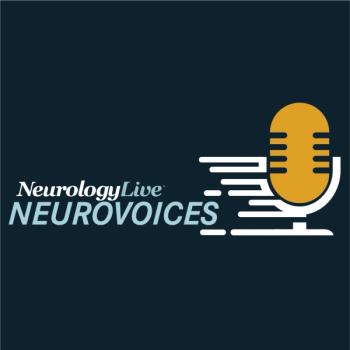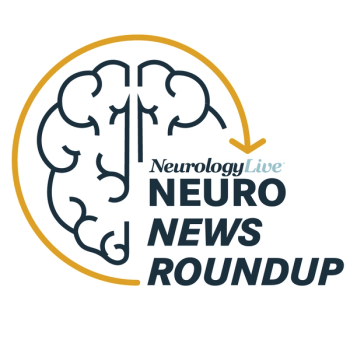
Over 144 weeks of treatment, patients on CNM-Au8 demonstrated sustained improvements in low contrast vision, working memory, and information processing speed.

Marco Meglio, Assistant Managing Editor for NeurologyLive, has been with the team since October 2019. Follow him on Twitter @marcomeglio1 or email him at [email protected]

Over 144 weeks of treatment, patients on CNM-Au8 demonstrated sustained improvements in low contrast vision, working memory, and information processing speed.

Additional data, including secondary end points and other efficacy assessments, are expected to be presented at an upcoming scientific meeting.

After 6 months of treatment, once every 4-week administration of DYNE-251 reached levels of dystrophin expression, exon skipping, and percent dystrophin positive fibers that exceeded levels reported in a previous trial of eteplirsen, considered the standard of care.

Overall, investigators observed DMPK knockdown, consistent splicing correction, and meaningful function improvement in myotonia while on DYNE-101.

Months after the FDA cleared a phase 2 study in myasthenia gravis, KYV-101 is set to be assessed in a diverse cohort of refractory progressive multiple sclerosis.

Over the 12-week study, treatment with famciclovir failed to reduce the frequency of viral shedding, further adding to the complexity of the role of Epstein-Barr virus in MS.

Over a year period on the combination agent, patients showed significantly amplified Aß42 and Aß40 levels with no significant differences in other biomarkers of ptau, GFAP, or neurofilament light.

Over 76 weeks of treatment, those on 30 mg CNM-Au8 demonstrated significantly reduced plasma neurofilament light coupled with delayed time to morbidity events for the highest at-risk patients.

The senior vice president of medical and clinical affairs for Avadel Pharmaceuticals provided perspective on a recently published analysis demonstrating the benefits of once-nightly sodium oxybate in narcolepsy type 1 and type 2.

Investigators observed no new safety concerns, no cases of Alzheimer-related imaging abnormalities, and no notable changes in laboratory evaluations and EKG.

Steve Hughes, MD, chief medical officer at Avidity Biosciences, provided commentary on recently announced positive topline data for AOC 1044, an investigational agent for Duchenne muscular dystrophy.

Take a look at 5 of the most-anticipated clinical trial data readouts expected in 2024 that neurology health care professionals should keep their eyes on.

Mind Moments®, a podcast from NeurologyLive®, brings you a review of 2023, with insights from Sharon Cohen, MD, FRCPC; Robert A. Hauser, MD, MBA; Alberto Espay, MD, PhD; Carolina Ferreira Atuesta, MD, MSc; and Natalie Goedeker, CPNP. [LISTEN TIME: minutes]

The neurologist at Cleveland Clinic shared thoughts on a recently published study assessing the relationship between blood biomarkers and change in cognitive function and brain volumes in a cohort of professional fighters.

The research aimed to assess FMD prevalence and clinical manifestations in both elderly and younger onset individuals, revealing insights into symptom variations across different age groups.

The newly announced trial, dubbed ReTain, will featured 500 individuals with preclinical Alzheimer disease who will be randomized to ACI-35.030 or placebo for a maximum of 4 years.

The senior vice president, global head of medical affairs, and chief medical officer at Acadia Pharmaceutical, gave an overview of LILAC-2, a long-term extension study assessing trofinetide (Daybue), the first approved therapy for Rett syndrome.

Elizabeth M. Cassidy, MPH, research project manager at the TSC Alliance, provided clarity on a presentation at AES 2023 examining the association between TSC-associated neuropsychiatric disorders and seizure duration.

In a phase 3 study, patients on omaveloxolone had less physical impairment compared with patients who received placebo, as measured by the modified Friedreich Ataxia Rating Scale.

A-synuclein-positive athletes were similar to α-synuclein-negative athletes on demographics and other serum and blood biomarkers; however, these patients had lower grey matter volumes in the right inferior orbitofrontal, right anterior insula, and right olfactory cortices.

Subgroups of narcolepsy types 1 and 2 had significant reductions in a number of secondary outcomes, including number of sleep stage transitions, number of nocturnal arousals, and improvements in sleep quality.

AOC 1044 was well-tolerated in healthy volunteers, delivering dose-dependent increases in PMO concentrations in skeletal muscle following administration.

Mind Moments®, a podcast from NeurologyLive®, brings you an exclusive interview with Jennifer Gudeman, PharmD. [LISTEN TIME: 17 minutes]

The positive data report could potentially build on phase 2 study of Duchenne muscular dystrophy in which CAP-1002 met its primary end point.

Lobule VIIB showed a non-linear pattern of lower volume with each Hoehn and Yahr-increment bilaterally, with the most significant group differences at stages 4-5 compared with controls.

The chief medical officer of Biohaven discussed early-stage data supporting the efficacy and safety of BHV-7000, a selective Kv7.2/7.3 potassium channel activator in development for patients with epilepsy.

Also known as ATH-1017, fosgonimeton demonstrated a safe profile, with directional improvements in cognitive, functional, and biomarker assessments.

The OneRF Ablation System follows the Evo cortical and sEEG electrode product lines, marking a significant step in NeuroOne's journey to offer innovative solutions for neurological conditions.

The frequent use of REN wearable device for the acute treatment of migraine was shown to reduce the number of monthly treatments in adolescents, with a similar reduction in migraine and headache days seen in a pivotal prevention trial in adults.

Maura McCarthy, head of corporate development at Skyhawk Therapeutics, provided comment on a new phase 1 study assessing SKY-0515, a small molecule candidate as a potential treatment for Huntington disease.